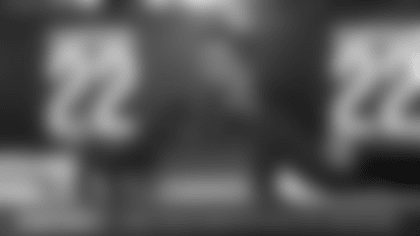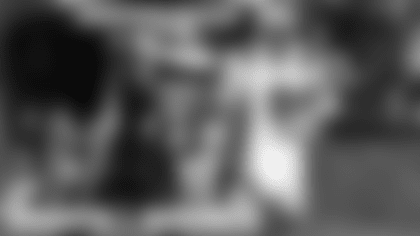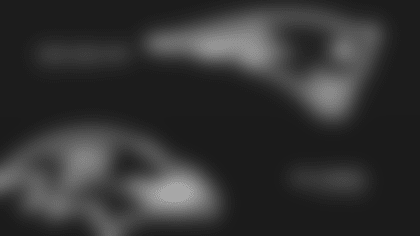**
BB: ** Not really a whole lot new from what we saw last night. It just wasn't a very good performance on the part of our entire football team. We just have to get back to work and do better than that in every area of the game. I don't think there's anything different than what the picture was last night. There were a few good individual plays here and there but overall just, we can't play like that and expect to do well against a good team.
Q: Did you feel like the performance last night was a step back or just part of the natural progression leading up to the regular season?
BB: I don't know. We'll just go back to work and see if we can correct the mistakes and move forward and do a better job.
Q: Is this a chance to see what type of resiliency this team has to bounce back from last night's performance?
BB: We just need to go out and have a good week of practice and do things a lot better than we did them last night, that's all. Nobody is going to do it for us; we're going to have to go out there. Nobody but us can make things any better than what they were last night. We have to go out there and do something about it.
Q: You had a long look at Joe Vellano last night. What did you see from him last night and during camp?
BB: I think Joe has played competitively through camp. He's a tough kid, out there every day, works hard, getting better. We'll just take it day by day and see how it goes. But he's been improving and that's a good thing.
Q: Logan Ryan has had a chance to line up at a few different positions, primarily outside and in the slot. Is there anything about his game that is better suited for either one of those spots? Do you like him in one of those spots over the other?
BB: I think we'll just have to see how all that goes. He played both positions in college. Depending on the matchups or our game plan or just how things unfold or how he does relative to other players, getting our best players out there on the field in the best spots for us as a team, we'll just have to see how all that unfolds. I'm not 100 percent sure. Depending on whatever the best position for him is or isn't, it's still going to come down to what's the best spot for him on our team. The more versatility and the more valuable he is to the team, then that's good for us and it will help him get on the field. We'll just see how it goes but he has played really all the spots in the secondary. We'll keep working him so he gives us depth, gives himself versatility and we'll see how it goes.
Q: It seemed like one area that Kenbrell Thompkins was effective was his ability to get off the line of scrimmage. Is that something that you guys saw pretty consistently when you were studying him or is that something that has developed since he's been here?
BB: I think that's an area that all rookie receivers need to work on and haven't had a lot of experience with. There isn't a whole lot of press coverage in college. There are a couple teams that do it but there's not a whole lot of it. I think that's something that any young receiver needs a lot of work on. I would say the same thing for the defensive backs. He would certainly go in that category; I think they all do.
Q: Specific to him, what skills does he have that makes him competitive in that area?
BB: We'll just have to see where that goes. Like you said, he made a couple nice plays last night. But working against different corners, different skill sets, he just has to match up individually. Whether it's quickness or speed or size or whatever it happens to be, technique, there are different ways to win out there and may not be all the same depending on the defender he's facing or the technique that they're playing. That's why players have to be good at more than one thing or have more than one skill or eventually then that one thing gets shut down by a particular technique or a certain type of player and then that player loses his effectiveness. For KT, he just needs to work on the whole process out there against different guys and different techniques and being able to deal with whatever the challenge is that he faces on the perimeter, be it the individual player or the technique that the guy is playing.
Q: For those of us who weren't there last night, can you update us on why Vince Wifork didn't play?
BB: We just didn't put him in. That's why.
Q: Because?
BB: Because there were other players who played.
Q: When you looked at it, what were some of the positive things you saw in the game last night?
BB: As I said, there were a few individual plays and a few things here and there that were competitive; it just overall wasn't good enough.
Q: Unless I'm mistaken, Shane Vereen and Brandon Bolden didn't play in the first half after fumbling. Was that sending them a message?
BB: Was it sending them a message? Our message has been the same here from day one that ball security is of the highest priority for anybody that handles the ball – that's a message from day one. I think that message has been delivered on a daily basis since we started practicing back in May. I don't think there are any new revelations about that message. Ball security is very important to anybody who handles the ball in any situation. There can be no mistake about the importance of it. There can be no mistake about that message. That message has been delivered ad nauseam.
Q: With the first of the roster cuts coming Tuesday, any idea if you'll make those moves closer to the deadline or will you start whittling away at it this weekend?
BB: You know, that's a good question. We got back late last night or early this morning, however you want to look at it. We're going through the film. We need to get together with the medical department and see how everybody is doing. We had a few bumps and bruises in the game. We had some other players that didn't travel to Detroit, so we'll have to kind of see where everybody is and just how we want to handle those roster decisions as you mentioned. I'm not sure when that will be. It will be when we think we know for sure what we want to do or what we can do. And how much information we'll have on that and how soon we'll get it and so forth, I just really don't know. But I think we have to make them Tuesday at four o'clock, is that right? Something like that, so we have a few days here. Whenever it is, we'll make them by then, but it gives us a few days. If we need the time, we'll use it. If we don't need the time and we know what those decisions are going to be, then we'll probably go ahead and do them once that's evident. But I'm not sure – I couldn't give you a timeframe as to exactly when that will be. But those are kind of all the things that those decisions would involve. I could say for sure right now, even if we wanted to make that decision, I doubt that we would really be able to make good ones based on the fact that we just don't have enough information on where everybody is. I definitely don't see it happening today, but from here forward we'll just take it as it comes and see how it goes. Sorry, I wish I could be more definitive, but we really don't know ourselves.
Q: On the idea of running on a two-back set compared to two tight ends with one tight end on each side of the line or two tight ends on the same side of the line, what does that give you as an offense when you have a two-back set in the running game versus two tight ends? Is that a different dimension that's a positive or are they equal in terms of the benefit they give you?
BB: You're talking about two backs and one tight end versus one-back and two tight ends?
Q: Right.
BB: There are still two receivers in the game?
Q: Exactly.
BB: Well, I think when you, just fundamentally, when you have one back in the backfield and you have four on-the-line receivers, that gives you an ability to get into the defense potentially with four people. Or even if it's three of them, sometimes the defense isn't sure which three of them it is. One tight end could be in it and the other guy could be in protection, that type of thing. I think you're able to attack the defense from the line of scrimmage a little bit quicker and with a little less predictability, depending on who those players are, of course. That's certainly a factor. But as far as your running gaps, I mean, you can put more width at the formation by having a guy on the line, whether it's four on one side and two on the other side of the center or three and three. You just have a wider front, which there are some advantages to that. By having them in the backfield, you can create that same four-man surface or three-man surface after the snap so the defense doesn't know where the four-man surface or three-man surface is. The fullback has to – he can build that from the backfield. And then there are also, let's say, a greater variety of blocking schemes with the fullback in the backfield because he can block different guys and come from different angles. He's not always behind the quarterback. He could be offset one way or the other and create different blocking schemes and angles that it's harder to get from the line of scrimmage. Also, depending on who your tight end is, it can be a little bit easier to pass protect seven men because two of them are in the backfield instead of us having one in the backfield. And then when you start running guys up the middle in the gaps and things like that. I think fundamentally it's a little easier to pick them up when you a have a guy in the backfield that can step up and block him from the fullback position as opposed to a tight end in the line of scrimmage who probably isn't going to be able to loop back in and get him, so the line is probably all going to have to gap down or not gap down if the guy drops out and all that. It just creates a different – it creates some advantages, I think, and it also creates some things you have to deal with. You just have to decide how you want to deal with them. Obviously when you have a guy in the backfield, it's harder to get those two receivers vertically into the defense in the passing game. They're usually running shorter routes to the flat or checking over the ball or those kind of things, short crossing routes – versus having that fourth receiver on the line of scrimmage who can run some downfield routes, again depending on who the individual person is. The skill definitely changes what you can do with that guy. So, I mean, I think those are the things that come into play. Some teams are very settled in one type of offense or another, so all of their plays and their rules or their adjustments come from that particular set. And other teams use multiple looks to, say, run the same plays or the same concepts to try to give the defense a different look. It's harder for them to zero in on what they're doing. But they're able to do similar things from different personnel groups or different formations. That's a long answer to a really short question, but I hopefully that helps a little bit.











































